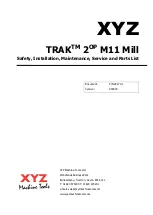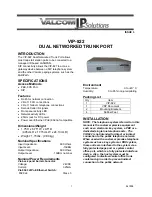
39
to synchronize the wireless network.
RTS/CTS Threshold:
The RTS (Request To Send) threshold (number of bytes) for
enabling RTS/CTS handshake. Data with its frame size larger than this value will perform
the RTS/CTS handshake. Setting this attribute to be larger than the maximum MSDU (MAC
service data unit) size turns off the RTS/CTS handshake. Setting this attribute to zero turns
on the RTS/CTS handshake Enter a value between 1500 and 2347.
Fragmentation Threshold:
The threshold (number of bytes) for the fragmentation
boundary for directed messages. It is the maximum data fragment size that can be sent.
Enter a value between 256 and 2346.
DMIT: This value, between 1 and 255, indicates the interval of the Delivery Traffic
Indication Message (DTIM).
802.11b/g/n: The default setting is 802.11b+g+n (Mixed mode). If you do not know or
have both 11g and 11b devices in your network, then keep the default in mixed mode. From
the drop-down manual, you can select 802.11g if you have only 11g card. If you have only
11b card, then select 802.11b and if you only have 802.11n then select 802.11n.
11n Settings
Channel Bandwidth: Select either 20 MHz or 20/40 MHz for the channel bandwidth. The
higher the bandwidth the better the performance will be.
Guard Interval: Select either 400nsec or 800nsec for the guard interval. The guard
interval is here to ensure that data transmission do not interfere with each other, it also
prevents propagation delays, echoing and reflections.
MCS: There are options 0~15 and AUTO to select for the Modulation and Coding
Scheme. We recommend users selecting AUTO.
SSID Settings
SSID Index: Default SSID index is “1”.
SSID: The SSID is the unique name of a wireless access point (AP) to be distinguished
from another. For security propose, change the default wlan-ap to a unique ID name to the
AP which is already built-in to the router’s wireless interface. It is case sensitive and must
not excess 30 characters. Make sure your wireless clients have exactly the SSID as the
device, in order to get connected to your network.
Broadcast SSID:
Select Yes to make the SSID visible so a station can obtain the SSID
through passive scanning. Select No to hide the SSID in so a station cannot obtain the SSID
through passive scanning.
WMM:
WMM (Wi-Fi Multimedia) is a simple QoS which prioritizes traffic based on 4 AC (Access
Summary of Contents for BiPAC 5200N RC
Page 8: ...6 BiPAC 5200W RC BiPAC 5200SW RC...
Page 29: ...27 Step1 Set your new password Step2 Choose your time zone...
Page 30: ...28 Step3 Set your Internet connection...
Page 31: ...29...
Page 32: ...30 Step4 Restart your ADSL2 Router...
Page 34: ...32 ATM VC...
Page 75: ...73 4 7 Help...
















































